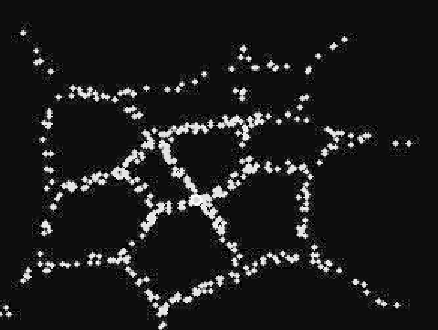Biomedical Engineering Reference
In-Depth Information
Many different functions may be taken into account by the lumped model, such
as reduction or widening of the cross section, Venturis, and a change of the direc-
tion of the circuit and pumps.
The system of (2.70) and (2.72) constitutes a system of
N
+
M
equations, be-
cause there is an equation of type (2.70) at each node and an equation of type (2.72)
for each branch. With proper boundary conditions, such a system can be solved
either by matrix inversion, if it is a very complex system, or by direct calculation
for the simplest cases. Next we give an example of the usefulness of lumped models.
Attention should be given to the liquid flowing in the channels. We saw in Section
2.2.2 that non-Newtonian networks behave differently than Newtonian fluid net-
works.
2.2.9 Microfluidic Networks: Worked Example 1—Microfluidic Flow
Inside a Microneedle
An example of the emergence of new technologies in medical science is micronee-
dles. For external uses on human skin, the classical needle with syringe has found
a replacement with the patch of microneedles [36, 37]. For internal delivery, new
concepts of needle are currently being developed [38, 39]. One of these new con-
cepts is that of a needle of smaller cross section—to be less invasive—and with
many microscopic side channels in order to diffuse more efficiently the injected
molecules.
Flow motion in this last type of microneedle is a good example of microflow and
an example of the utility of lumped models. For this reason, in this section we detail
the flow distribution and the approach to the dimensioning of such a system.
2.2.9.1
DrugDeliveryandInjectionSystem
Diffusion in cell clusters and tumors will be presented in Chapter 4 concerning the
mechanism of diffusion. We recall the principle of drug injection (Figure 2.32).
Figure 2.32
Viewofdruginjectioninacellcluster(obtainedbycalculation[40,41]).TheECSis
delimitedbythewhitedots.







